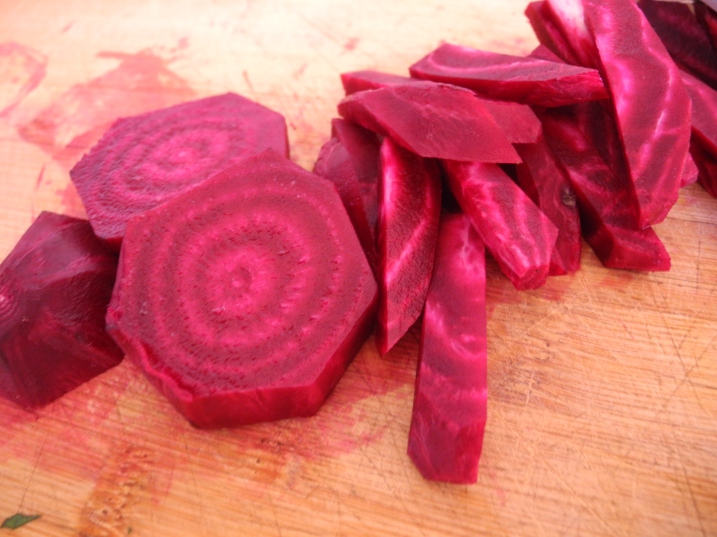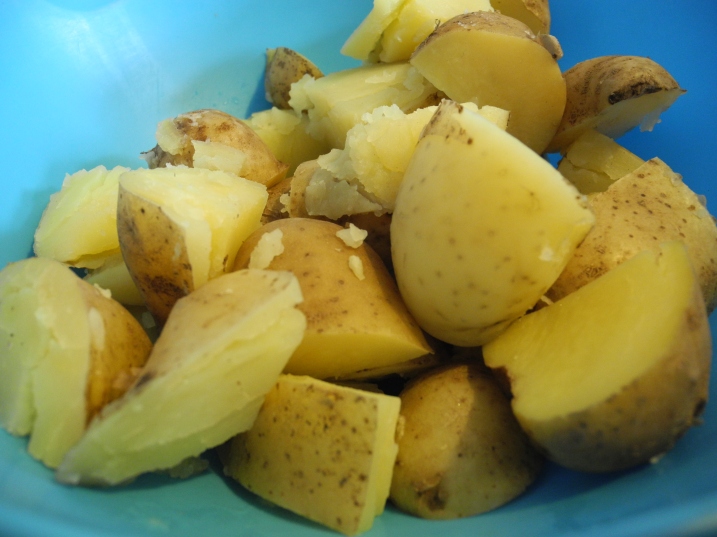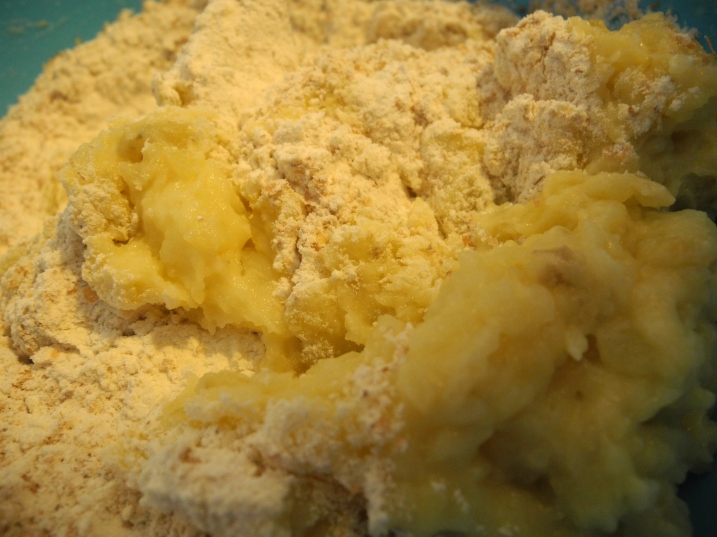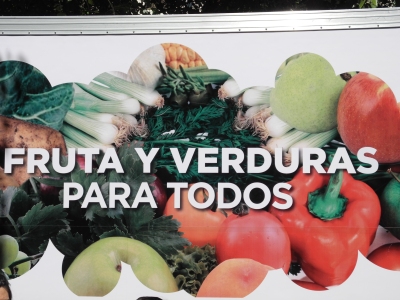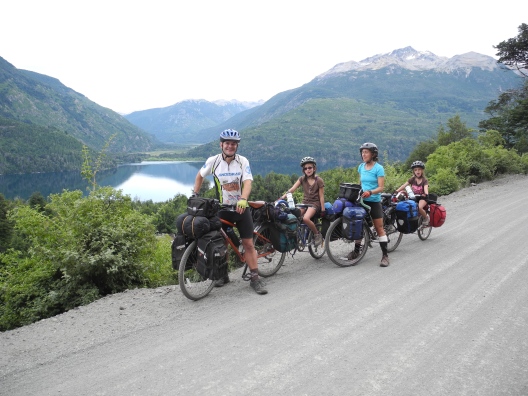As I enter my 9th month here in Mendoza, something is happening. I am starting to connect to the food. I am recognizing the seasons, and their bounty and enjoying preparing foods utilizing the beautiful Autumn (yes Autumn!) produce. And, I have discovered some people who are at the heart of creating a sustainable, organic food community here. Adam, an American who’s day job is to export organic produce to distributors in the US, and Laura, an Argentinian who share’s his passion for healthy, natural foods, along with Marcio, an Agronomist and farmers Dina, Ruben and Sandra, have created ‘Siembra Diversa’, a sustainable food cooperative. They work to promote clean and safe organically raised food, and the people who raise it.
I was thrilled to learn I could receive a box of organic vegetables, honey, flour, nuts and juices delivered to my door much like a CSA (Community Supported Agriculture) farm works in the US, and I happily placed my first order last week. The box that Adam delivered to my door was stunning. Overflowing with beautiful, fresh and lovingly bundled bunches of chard, radishes, corn, beets, squash, potatoes, apples, onions, eggplants, zuchini, cucumbers, carrots and tomatoes. In addition, I received organic whole wheat flour, flax seeds and honey. All of this for approximately $20 USD. While this sounds cheap to us, it is a big investment for locals. I managed to find places for everything in our tiny fridge, and proceeded to start the familiar pondering of what I would prepare with the abundance in front of me.
This is one of the biggest challenges that people in my community face when they make the ‘CSA commitment’. The familiar question arises: now that I have all this fresh food, what the heck am I going to do with it??? I wondered if the Mendocinos who receive these boxes have the same concerns. I wonder about who is buying this food, and how Siembra Diversa is doing as a business. And I continue to wonder about the value that organic, sustainable and natural foods have or don’t have in this part of the world. I know that for many in Minnesota, where sustainable agriculture and organic cooking is trendy and popular, a weekly delivery of vegetables can be daunting, and requires time, planning and ongoing attention. It is one example of the challenges of eating a healthy whole foods diet and maintaining a sustainable lifestyle. Here, where sustainable agriculture and organic cooking is much less common, there isn’t a culture yet to support the commitment of time and money that it requires.
Laura explained to me that they have had a hard time recruiting new farmers to convert to organic methods, despite the fact that their main grower, Dina, has been very financially successful. She also explained, and I have begun to observe this, Mendocinos do cook. They know what to do with eggplant, tomatoes, zuchini and squash. There may not be extraordinary variety in what they prepare (can you say empanadas, pasta and pizza?), but they are familiar with vegetables and enjoy them with gusto. The larger question is whether there is an audience that is willing to pay more for food raised without agrochemicals. To create a culture of sustainabiity, one must be willing to place something else lower on the list (new sporting gear? a bigger television? fancy clothes?) in order to prioritize safe, clean food and ultimately to support a healthier food system. This doesn’t just happen overnight. For most of us, it requires a re-assessment of our values, combined with a stronger relationship with our food and where it comes from.
The challenge of building a culture of sustainability, in which businesses like Siembra Diversa are thriving and well supported is not unique to Mendoza. It exists everywhere, whether explicitly-as it is currently in Minnesota where hundreds of people, from farmers to policy makers are working on these issues, or informally in small communities throughout the world who may not even know the term “food system”. I applaud the efforts of Siembra Diversa for bringing the conversation, and the food closer to the community!
It has taken me almost a year of living here to finally begin to understand the local food system, such as it is. This is not for lack of trying. It can be very difficult to access sustainable local food even when you DO have resources (ie: money, education, time), it gives me great appreciation for how complicated it is for someone without those resources.
Ultimately, the joy of receiving, arranging, cooking and eating this food for me is profound, and something I wish for people to experience. Here is a list of everything I prepared from my box, and it’s not gone yet!: Fresh tomato salsa (recipe below), roasted vegetables including potatoes, squash, carrots and potatoes, eggplant ricotta dip (recipe below), zuchini muffins, pickled radishes (recipe below), several batches of eggs with sauteed vegetables and of course salads.
FRESH TOMATO SALSA:
2 small or 1 medium yellow onion, diced small
1/2 bunch cilantro, minced
1 clove garlic, minced
4 medium or 8 small tomatoes, diced small
juice of 1/2 lemon
1 tsp salt
Combine all ingredients in bowl. Puree half mixture in food processor if desired and return to the bowl.
Serve with tortilla chips, bread or just eat with a spoon!
EGGPLANT RICOTTA DIP (adapted from a recipe by Camelia Coulatti)
12 small or 4 large eggplant
2 cloves garlic
1/4 bunch cilantro
1 cup ricotta cheese
2 T olive oil
2 T balsamic vinegar
1 tsp salt
Prick eggplant with fork and roast in 400 degree oven until very soft-about 25 minutes. Set aside
When cool, use a fork to scrape the insides of the eggplant. They should come off easily. Place in the bowl of a food processor
Add remaining ingredients and puree until well blended. Adjust salt to taste.
Serve with crackers, bread, chips or as a condiment with spicy lentils or stir fried vegetables
PICKLED RADISHES (VEGETABLES)
These are simple refrigerator pickles, and can be made with any vegetables. They are a great, quick way to preserve vegetables when you have lots and don’t want them to go bad.
2 bunches of radishes, cleaned, trimmed and sliced in 1/4 inch slices
1/2 cup white or apple cider vinegar
2 cloves garlic, chopped
1/4 inch ginger, peeled and chopped (optional)
1 T. spices-mustard seed, caraway, cumin seed, dill etc
1/4 cup honey or sugar
1/4 cup water
salt
Heat liquid, garlic, ginger and spices in saucepan over medium heat to a simmer. Simmer for about 5 minutes. Place radishes(or any vegetables) in appropriate sized glass jar-probably a pint for this amount. Pour liquid over radishes. Let sit and when cool cover and refrigerate. These will improve over time and can last up to a year in the refrigerator.
